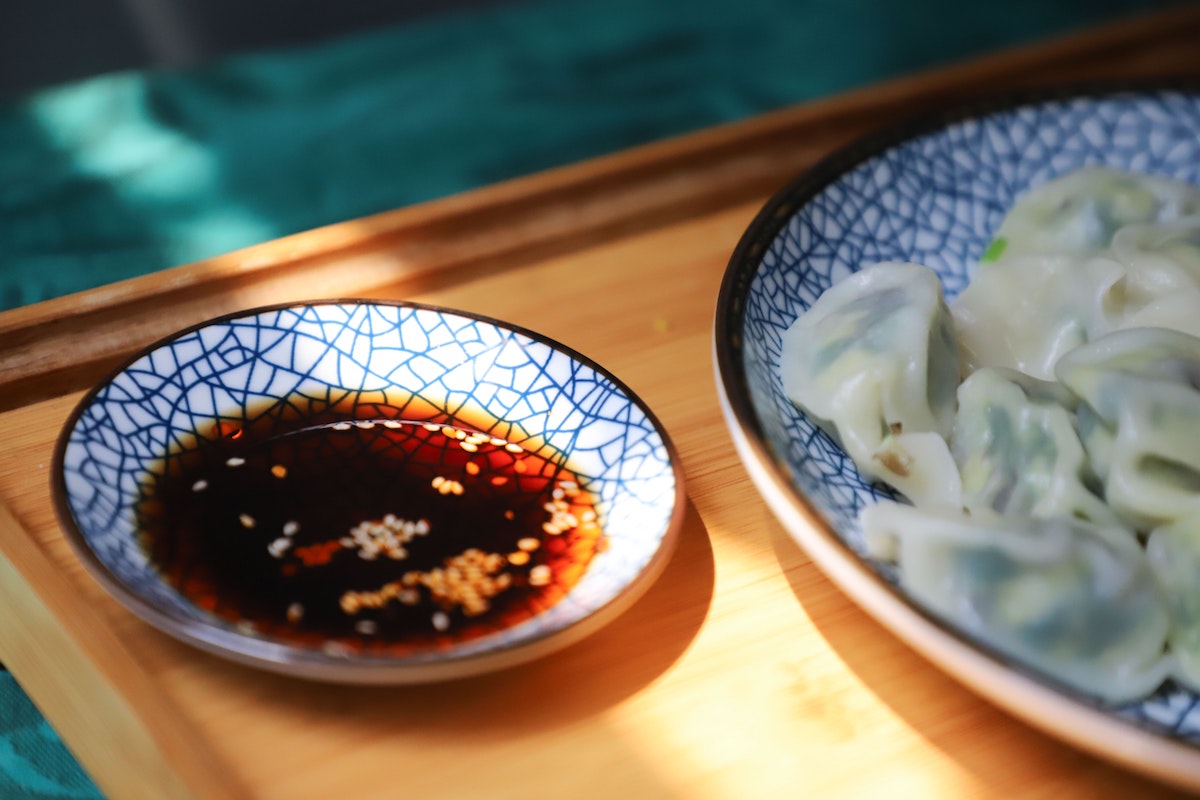
Like any number of staple food condiments, soy sauce is often overlooked. But the delicious umami liquid deserves more attention, especially as some of the best stuff out there is both meticulously crafted and full of complexity. Turns out, there’s an ancient art to soy sauce.
Industrialization has made food-making a more efficient process but we’re increasingly returning to the tried and true methods of old. When it comes to soy sauce, that means a patient process that honors tradition and produces maximum flavor. Read on to see how the stuff is made and why the approach of old is the way to go.
Low and slow

There’s hardly a better source for a soy sauce story than an eighth-generation brewer. Takashi Sato is just that, the founder of San-J and working hard to revive artisanal fermentation methods.
“Low-priced soy sauce is made by breaking down raw materials with hydrochloric acid without any fermentation, so it can be produced in large batches in only a few days,” says Sato. “As a family-owned company, we are not bound by the pursuit of short-term profits. Our recipe consists of 100% soybeans meticulously brewed for up to six months. This leads to a high soy protein content, deep umami taste and a complexity of flavors, which you won’t get with lower quality blends.”
Like so many great edible things — wine, pasta, stew — an unhurried process yields a memorable product. When soy sauce is made with intention and no immediate deadline, there’s that much more to savor. Simple soy sauce can do many things with its salt-first characteristics, but a more involved option challenges the palate and enhances the countless number of dishes its paired up with.
How to make soy sauce

Essentially, soy sauce is made by turning a protein into a source of acid. The liquid begins with soybeans and grain (often wheat), often treated to cultures to jumpstart a fermentation. Like beer, soy sauce is brewed. The koji mixture, or mix of grain and soy, is then fermented, aged, and pressed. More meticulous producers like Sato tend to draw the process out and incorporate little tweaks here and there, but that’s the jest of the process.
“The key to quality soy sauce is the process of breaking down proteins into amino acids, which creates the classic umami flavor,” Sato says. “There are many ways to break down protein. At San-J, we maintain a traditional brewing method using koji, which is more expensive but the result is premium.”
Patience is not just a virtue, but a core tenet in the slow food movement. “The production of soy sauce takes a very long time and requires monitoring,” adds Sato. “If left unattended, unnecessary microorganisms can proliferate. Therefore, it is important to maintain patience and vigilance.”
Of course, with so many protein sources, one could make a similar sauce out of just about anything. Sato and his brand just released a shoyu and tamari in collaboration with Eleven Madison Home. “Using black beans and corn flour, two unlikely ingredients in Japanese food, the Shoyu and Tamari refresh the soy sauce category and offer something unexpected and versatile that can easily be incorporated into Western cooking,” he says.
Sato is evolving with food allergies too, making options that cater to more sensitive demographics. The sauce is made without any of the major allergens, such as soy, nuts, and dairy. The No Soy Tamari is brewed with peas and fermented with the ago-old methods.
The future

Innovation and technology will continue to play a role and Sato’s objective is to utilize it where he can while sticking to methods that result in robust flavor. With climate change in the mix, Sato says there will be more GMO products on the horizon in the name of efficiently-grown crops. San-J avoids such inputs and while non-GMO options are growing more expensive, it’s worth the effort. And then there’s the experimentation side of the business.
“We are always looking to create new forms of soy sauce that allow us to experiment with our signature recipes in diverse ways using unexpected ingredients,” Sato says. That translates to a pretty interesting test involving an unexpected ingredient. “We are also experimenting with soy sauce made from food waste such as pumpkins used for Halloween as well as eco-friendly ingredients like Kernza,” he says.
If there’s a north star for the brand, it might just be a condiment that reflects the terroir of the states. “My ultimate goal is to use traditional Japanese brewing techniques to make soy sauce that is unique to America – which has not yet been done,” Sato says. “At the same time, our core values and brewing techniques endure. We are still using pure, simple ingredients and rely on the great power of fermentation to create the rich, complex flavor that San-J is known for, without shortcuts.”
Soy sauce has been dubbed Asia’s salt and it’s no wonder, as it goes with well with everything from the best Chinese cuisine to home-made sushi. Instant ramen noodles too can benefit from a drizzle of the good stuff, especially if the soy sauce was deftly made. Go on and try a good bottle out on all of your favorite dishes.


